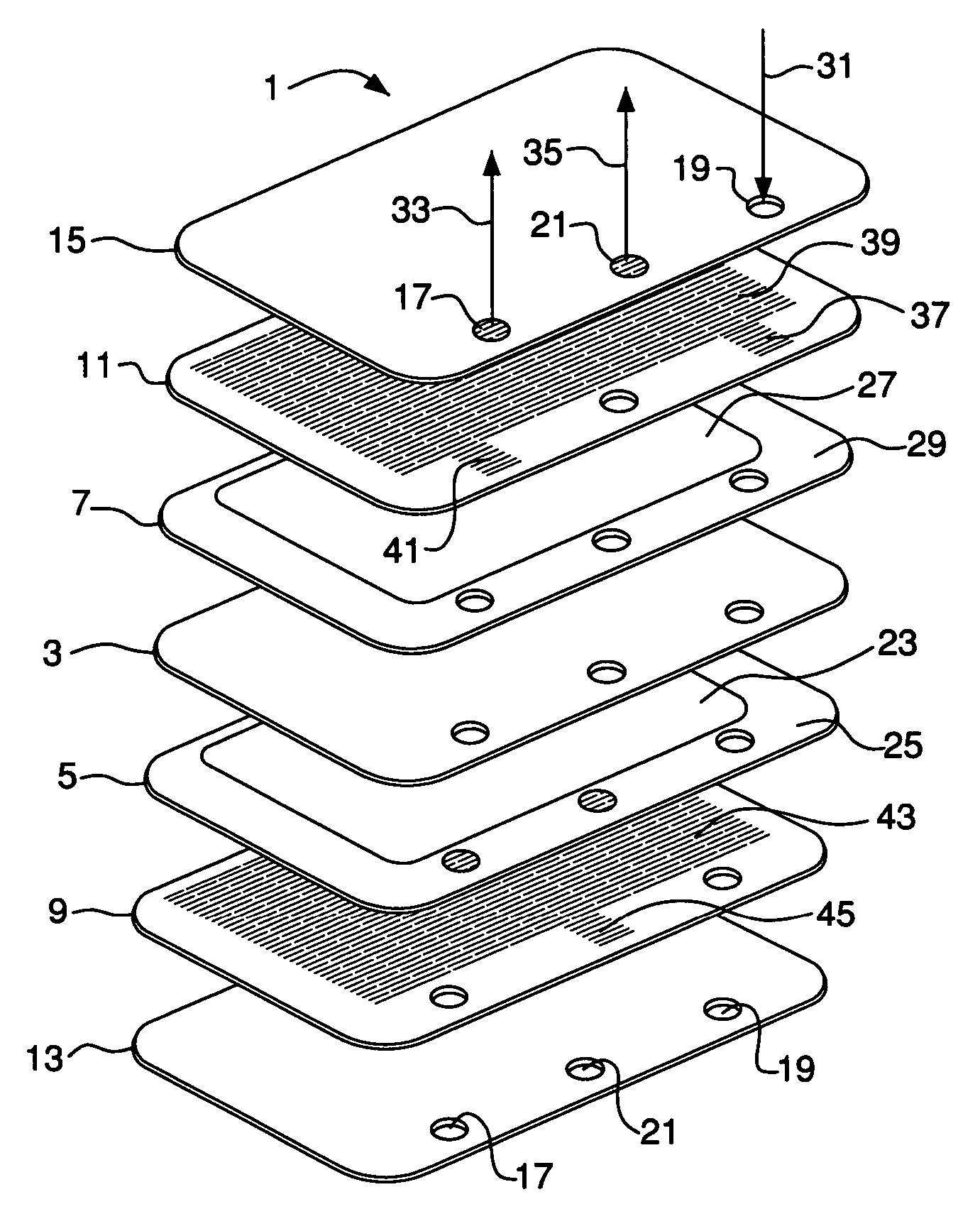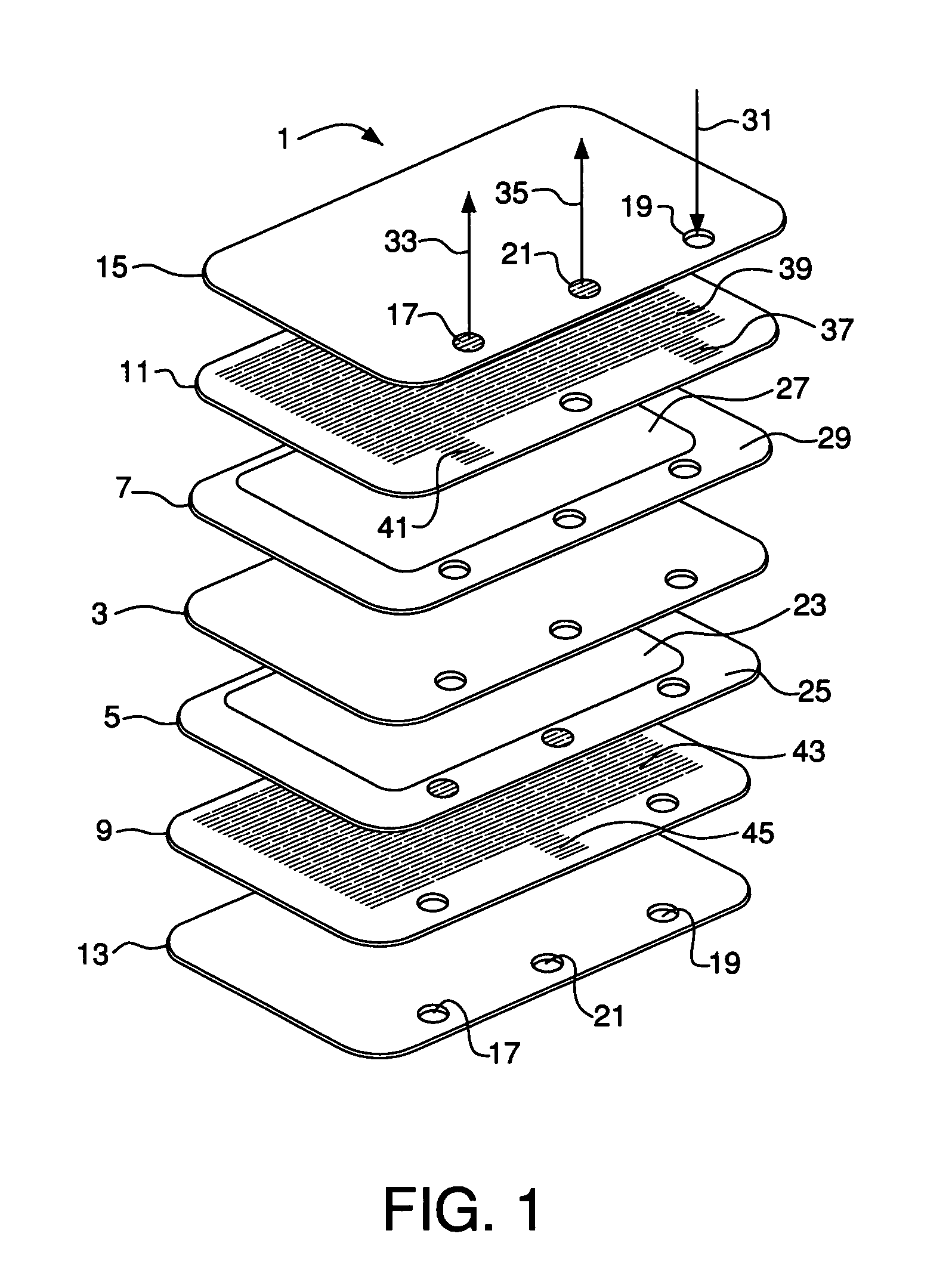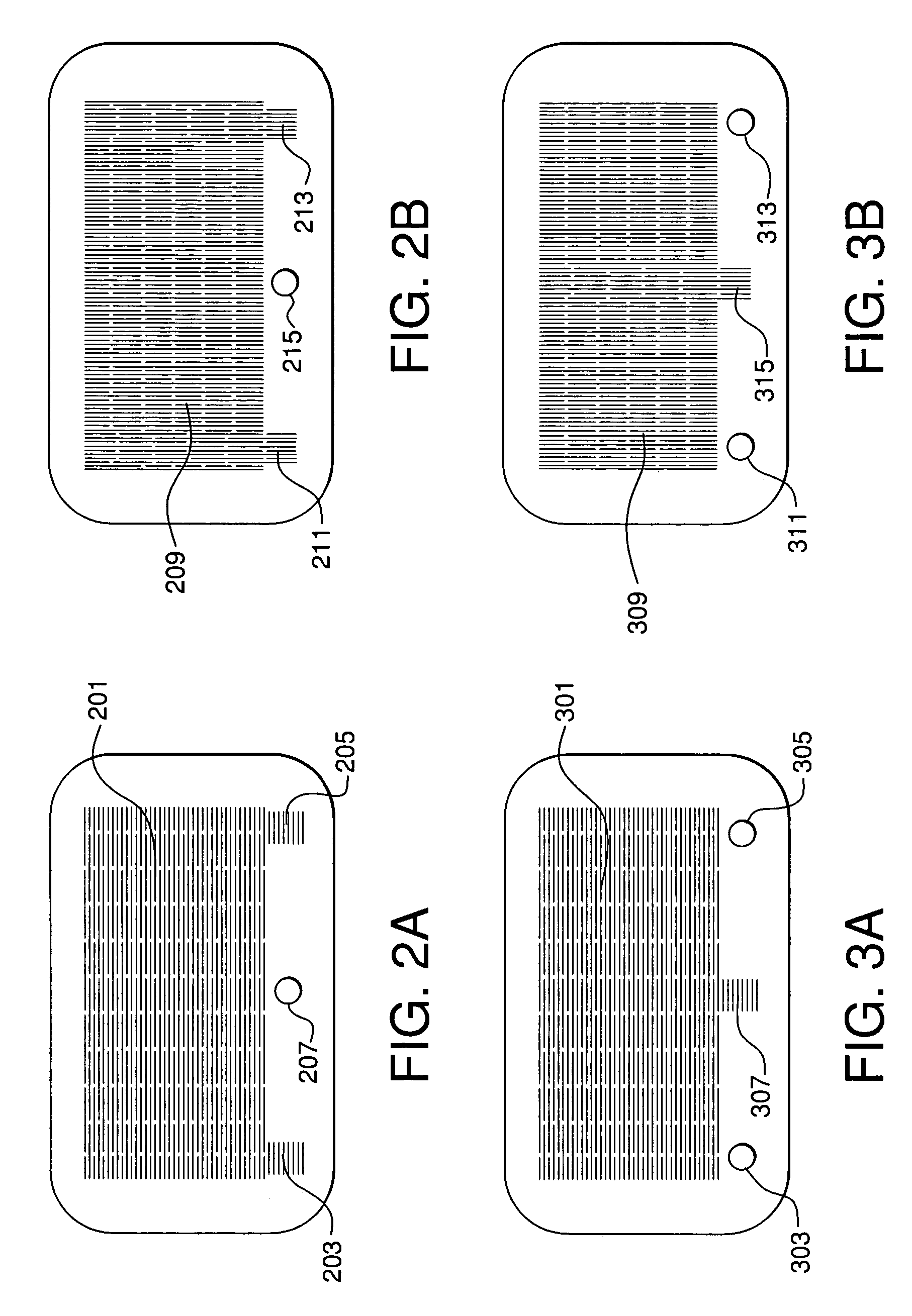Method of making an ion transport membrane oxygen separation device
a technology of oxygen separation device and ion transport membrane, which is applied in the direction of cell components, final product manufacturing, sustainable manufacturing/processing, etc., can solve the problems of joule heating and associated thermal stress on the device, and reducing the specific power
- Summary
- Abstract
- Description
- Claims
- Application Information
AI Technical Summary
Benefits of technology
Problems solved by technology
Method used
Image
Examples
example 1
Co-Sintered Electrochemical Cell Without Slotted Layers
[0084]Green tapes required for multi-layer multi-composition laminates were made from powders that were fabricated by conventional ceramic powder processing techniques starting with the raw oxide components. Each electrode support tape was made as follows: 1000 g of 15 mm diameter YTZ media, 500 g of pre-reacted LCM (La0.4Ca0.6Mn1.01O3−δ) powder possessing a surface area of about 1 m2 / g, 62 g microcrystalline cellulose pore former (NT013), 217.0 g toluene, and 54.3 g ethanol were added to a 1 L HDPE (High Density PolyEthylene) bottle and placed on an industrial paint shaker for ½ hour. 48.7 g of PVB (Poly Vinyl Butyral) B-98 (Solutia brand) binder and 48.7 g of BBP (Butyl Benzyl Phthalate S160) plasticizer were added to the bottle and paint shaken for another hour. The bottle was then placed on a ball mill and allowed to roll at ˜50 RPM for ˜12 hours. This slip was screened through a nylon mesh fabric with ˜40 μm openings, degas...
example 2
Co-Sintered Electrochemical Cell Incorporating Slots in Interconnect
[0097]LCM electrode support tapes (formulated to be porous after sintering), electrode tapes (formulated to be porous after sintering), and electrolyte tapes (formulated to be dense after sintering) described in Example 1 were used to fabricate green multi-layer cells that were then co-sintered. A green electrode tape was prepared from pre-reacted LCM powder that had been milled to a surface area of ˜4.5 m2 / g. The tape was made as follows: 1000 g of LCM powder, 364.8 g of toluene, 91.20 g ethanol, 5 grams PVB B-79, and 1000 g 15 mm Ø YTZ media were added to a 1 liter HDPE bottle. The bottle was paint shaken for ½ hr after which 85.69 g PVB B-98 and 45.34 g BBP S160 were added followed by 1 hr of paint shaking. The bottle was then placed on a ball mill and allowed to roll at ˜50 RPM for ˜12 hrs. The slip was cast on a Mylar carrier film using a doctor blade to make a green ceramic tape.
[0098]Discs (˜4.35 cm diameter)...
example 3
Co-Sintered Single Electrochemical Cell Producing High Purity Oxygen
[0101]A green cell was fabricated from green tape layers using the methods described in Examples 1 and 2. The oxygen ion-conducting electrolyte membrane was made from green Ce0.845Sm0.15Co0.005O1.925 tape. Green electrode bi-layers were made by laminating a green tape of 200 micron thick LCM electrode support material to a green tape of 90 micron thick electrode material. The electrode tape used corresponds to composition C in Table 2, in which the ceramic powder was 65 vol % LSCF3728 and the balance Ce0.85Sm0.15O1.925. Electrode rims were made from LCM tape about 250 microns thick and were laminated to the green electrode bi-layers rims to form composite electrode layers, which were then laminated on each side of the electrolyte layer to form a green electrode-electrolyte structure.
[0102]A cathode side gas distribution interconnect layer was fabricated from two slotted sublayers shown in FIGS. 2A and 2B as describe...
PUM
| Property | Measurement | Unit |
|---|---|---|
| temperature | aaaaa | aaaaa |
| pressure | aaaaa | aaaaa |
| pressure | aaaaa | aaaaa |
Abstract
Description
Claims
Application Information
 Login to View More
Login to View More - R&D
- Intellectual Property
- Life Sciences
- Materials
- Tech Scout
- Unparalleled Data Quality
- Higher Quality Content
- 60% Fewer Hallucinations
Browse by: Latest US Patents, China's latest patents, Technical Efficacy Thesaurus, Application Domain, Technology Topic, Popular Technical Reports.
© 2025 PatSnap. All rights reserved.Legal|Privacy policy|Modern Slavery Act Transparency Statement|Sitemap|About US| Contact US: help@patsnap.com



